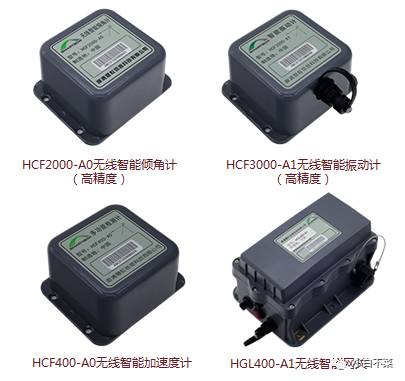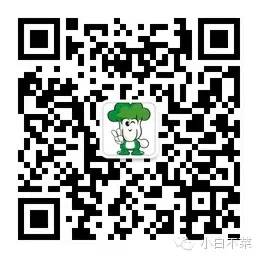
[Listen to Yang Jie]
This is an unknown startup company, with a team of less than 50, 40 of whom are technical staff, yet it has secured 36 million in Series A funding, with Qingkong Yinxing leading the investment of 24 million and Yuandu Venture Capital investing 12 million;
This is also a tech-driven company with many cool inventions that have never been commercialized;
It is a company following many Chinese enterprises going overseas under the Belt and Road Initiative, facing a market demand of billions of dollars, yet it rarely receives public attention.
It is Yuanqing Huihong Technology.
What have they done? Here are a few examples: bury one of their small detectors to sense landslides in mountainous areas; use a mobile app to test the stability of a used car engine; identify faults in a drone without disassembling it—cool, right?
Yes, while many IoT companies have yet to find a killer application, a product that has proven to have huge market demand has already become a “necessity” for many public infrastructures, which is Yuanqing Huihong’s new generation of wireless intelligent sensors and overall solutions!
If you can’t understand it for a moment, let me give you another example: In 2016, on a bridge across the Yellow River, monitoring software “discovered” an abnormal decrease in the tension of the hangers. After manual inspection, it was confirmed that internal rust at the anchorage caused the hanger failure. Workers promptly replaced the relevant hangers, eliminating the danger at its initial stage.
All these important functions come from a specialized wireless intelligent sensor produced by Yuanqing Huihong. Yes, perhaps you have never paid attention to this inconspicuous industry, but in the coming IoT era, you must know that sensors will become the most basic component of this world.
In the eyes of Yang Jian, an investment manager at one of the investors in this round, Qingkong Yinxing, most roads, bridges… public facilities in the future IoT era will be installed with such sensors. This market holds a demand of billions of dollars for Yuanqing Huihong, and once this era begins, there will be no reason to stop.
Probes under the Nine-Dragon Wall
The Nine-Dragon Wall in Beihai, Beijing, is magnificent, but tourists do not know that under the tiles at the top of the wall, multiple small wireless tilt sensors are also “hidden”—Beihai’s staff discovered that the Nine-Dragon Wall was showing signs of tilting… After installing this sensor, without affecting the overall appearance of the wall, staff can check data anytime through client software, keeping track of the wall’s “health” status for timely maintenance.
Not only that, actually Yuanqing Huihong’s sensor products are extremely diverse, covering various measurement functions such as cable force, vibration, tilt, temperature, humidity, wind direction and speed, cracks, displacement, strain, seepage pressure, soil pressure, etc.—these products can be applied in monitoring bridges, rail transit, tunnel slopes, reservoir dams, building structures, geological disasters, and collapsing rocks… among other scenarios.

For example: Wuxi has more than 1,000 bridges of various sizes, widely distributed, with various types and a long span of construction time, making management quite difficult, requiring manual inspections. Now, more than 1,000 bridges are using Yuanqing Huihong’s technology, and maintenance personnel can understand the maintenance status of the bridges at any time through the “Wuxi Urban Bridge Information Management Platform,” including technical conditions such as cable force, displacement, deflection, vibration… and more for some special structure bridges.
Another example is Feng Liangping, the deputy chief engineer of China Communications Road Planning and Design Institute Co., Ltd., who is a core customer of Yuanqing Huihong. Feng started collaborating with Yuanqing Huihong back in 2014, and recently applied wireless intelligent sensors to the key project of the China-Maldives Friendship Bridge, using sensors to monitor various indicators of the bridge.
“China has many projects that are going out with our Belt and Road Initiative. Some are direct delivery projects, but some Chinese parties not only undertake construction but also need post-maintenance operations. For these overseas projects, sending dedicated personnel is too costly and unrealistic. Yuanqing Huihong’s solution is the best choice!” Yang Jian said, allowing the Chinese side to simply arrange staff to monitor bridge, railway, and other project conditions through software domestically.
Of course, Yuanqing Huihong’s service consists of three parts: sensors, gateways, and monitoring systems—behind the sensors are three major “hard technologies”!
Tsinghua’s “Tech Faction”
“Yuanqing Huihong is currently the company with the highest technical level in this field.” Yang Jian said: “Qingkong Yinxing only invests in the strongest companies in the field.”
This is definitely a tech-driven company; the founder is Professor Yang Huazhong from Tsinghua University’s Department of Electronic Engineering, a Changjiang Scholar, and Yuanqing Huihong is also a wireless intelligent sensor company transformed from university research results. The technical chips in this company are the fundamental reason for securing increasingly large projects.
“Yuanqing Huihong’s wireless intelligent sensors have excellent low-power technology, and it is very difficult to find alternatives!” Feng Liangping said this is the most prominent technical advantage of Yuanqing Huihong.
Indeed, low power consumption is a “hard requirement” in this field—sensors are often installed in high places during the construction of a bridge or dam, especially for cable force sensors on suspension bridges, where it is impossible to frequently send people up to replace batteries. Yuanqing Huihong has managed to reduce the sensor’s power consumption to a minimum—one sensor can even last ten years without needing a battery replacement!
The second unique advantage is the “two networks”—Yuanqing Huihong has two wireless networking solutions.
According to Yuanqing Huihong’s CTO Wang Pengjun, one is a network solution that enables self-organization between all sensors and gateways, with ultra-low power consumption, suitable for time synchronization and medium-speed application scenarios. The other recently developed solution is based on newer technology for low-power wide area networks, with wireless communication distances reaching 5 to 10 kilometers, requiring no mesh networking; the signal goes directly from the sensor to the gateway. Although the communication speed decreases and no longer supports time synchronization, it is more suitable for broader applications, such as bridge clusters, underground utility tunnels, and building complexes, achieving higher coverage.
“Our sensors have a filtering technology that can filter out all useless information and only upload useful information. Most companies in the industry now upload all data indiscriminately, which not only increases power consumption but also bandwidth usage,” Wang Pengjun said.
The third and equally important point is “security”!
Yang Jin, deputy secretary-general of the Popularization Work Committee of the China Electronics Society, particularly emphasized that the security of Yuanqing Huihong’s sensors and networking methods is very high.
“In China, the requirements for security in IoT sensors are very high!” Yang Jin pointed out that previously, whether it was Cisco’s servers or other companies’ products, there have been incidents of backdoors being exposed. After all, we are using other people’s communication protocols and software. Now, having independent intellectual property rights for software and hardware to solve IoT problems is of great value for promoting the development of China’s own intellectual property rights in IoT!”
At this point, if you think Yuanqing Huihong is merely a software and hardware service provider, you are gravely mistaken. It should ultimately be a “brain,” a “brain” providing services based on the cloud.
The “Brain” in the Cloud
However, in the heart of Yuanqing Huihong’s co-founder and CEO Chen Renqing, there are actually three Yuanqing Huihongs: one is a high-performance, highly intelligent sensor provider, another is a massive social benefit IoT big data service platform; and the third is a “smart IoT brain” company focusing on the application of artificial intelligence in IoT.
The first “high-performance, highly intelligent sensor provider” refers to providing specific services for projects, such as providing safety monitoring solutions and related products, technologies, and services for the realization of smart cities in areas like roads, bridges, underground utility tunnels, and buildings.
The second “big data” platform refers to data processing services. Chen Renqing believes that if the data collected by IoT is not further processed and refined, it loses the essence of IoT. Therefore, an important service content of Yuanqing Huihong is to provide customers with various analytical tools and data analysis results, forming the final big data analysis report.
But ultimately, Yuanqing Huihong should transcend these two stages—because what Chen Renqing is attempting to do in the third direction is to make the company the “artificial intelligence brain” for the entire IoT application, focusing on the in-depth integration and application of smart sensors and artificial intelligence in IoT in the near future.
For example, in the future, when Yuanqing Huihong’s sensors are placed on the generator of a dam, the data collected by the sensors will be uploaded to the cloud “brain,” and through spectrum analysis and vibration analysis, it will be able to tell people which screw on the generator is loose… without even opening the machine.
Once this capability is established, the application prospects and industry for Yuanqing Huihong will become broader, with large amounts of data continuously uploaded, analyzed, and verified in Yuanqing Huihong’s cloud, thus providing users with the answers they seek.
Yang Jie’s Review:
The Internet of Things is tentatively approaching us! Everyone knows this is the future trend, but has yet to find a killer commercial pain point. This inevitably makes operators hesitant and indecisive in their network investments.
But in the eyes of investor Yang Jian, the future profit models for IoT companies are diverse. For instance, several years later, when Yuanqing Huihong’s sensors occupy a significant market share, they can sell “judgments” to upstream suppliers, which will inevitably become a focus of attention and admiration for future investors.
Yang Jie guesses that operators will definitely like companies like Yuanqing Huihong because each of their sensors is essentially a small phone, containing chips, data, requiring network transmission, and needing cloud computing for data analysis…
Regardless of whether there are other killer applications in the IoT era, the market capacity for just the sensor product is already immeasurable!
【Xiaobai is not a novice】WeChat ID: xiaobaibucai521
We are Xiaobai, but we are not rookies!
Winner of the 2014 Best Self-Media Award
2014 Best Self-Media in Media Training Camp
Baidu Zhidao Certified Expert
2015 Media Training Camp Annual Media Star
2016 Annual Media Star in Media Training Camp
You can read on platforms such as Baidu Baijia, Toutiao, QQ Public Account, Tencent News Client, Netease News Client, Netease Cloud Reading, Xueqiu, Baidu Account… simultaneously.
